

Think cybersecurity is all about keyboards clacking in dark rooms? Think again! A newly uncovered link between education course designs and industry secret alliances may change your view entirely.
In an era where digital threats lurk in every corner, understanding cybersecurity education has never been more crucial. Evolving courses aren't just adapting—they're shaping a new battleground. Buckle up; the truth might astonish you!
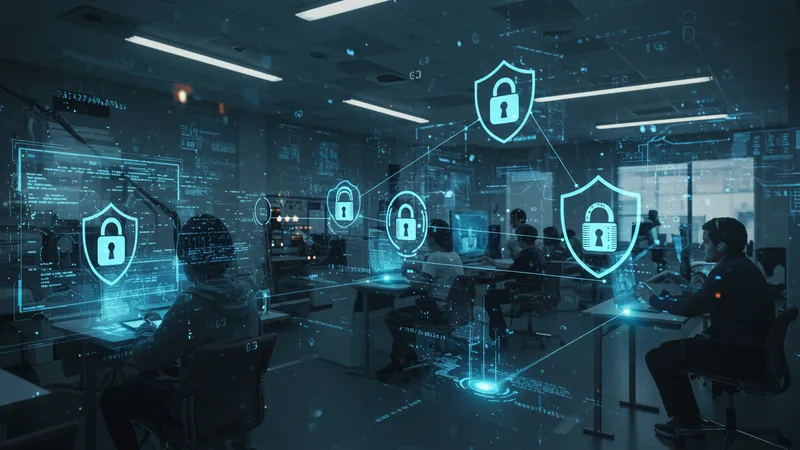
Did you know that top cybersecurity courses may use content straight from secretive government collaborations? Programs across the globe are integrating cutting-edge techniques, not just to thwart hackers, but to infiltrate real-world digital threats. But that’s not even the wildest part…
Several institutions have developed courses directly influenced by what's termed "cyber ghost protocols"—strategies known only to a handful of security elites. These aren't just theoretical exercises; they’re shaping future policies and protections. What if your course is both teaching and acting in real defenses? Stay tuned…
The next revelation challenges everything we assumed about cybersecurity learning. Part nerd haven, part espionage incubator—what happens next shocked even the experts…
Hidden within the seemingly ordinary corridors of universities and training centers lies an underappreciated truth: many cybersecurity curriculums incorporate lessons pulled straight from active threat scenarios. It sounds like fiction, but some courses are utilizing ongoing cybersecurity incidents as case studies. Often these scenarios are so secretive that only a select few know they're based on real-world events. The line between classroom and battlefield is thinner than ever.
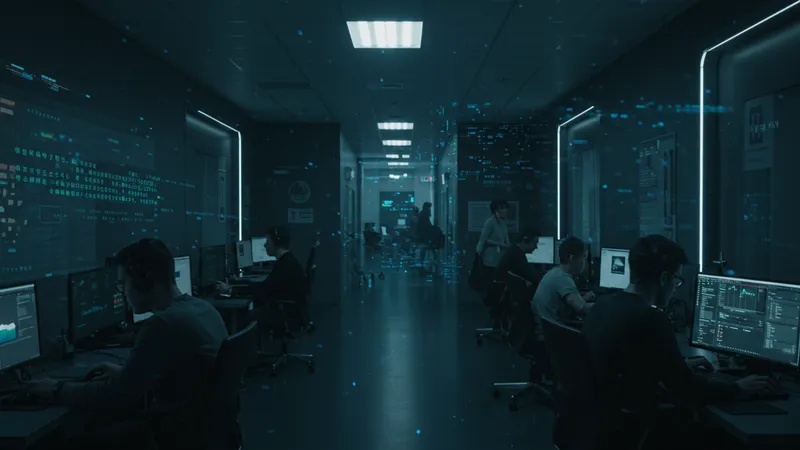
Programs like these provide students with an edge, prepping them for potential threats practically unheard of by their corporate counterparts. This prepares graduates uniquely—solving problems many have yet to even encounter. Some even argue this hands-on experience is the very essence of effective learning in such a fast-paced field. Dive deeper and you’ll question just where education ends and real-world operations begin.
Innovative institutions have started leveraging current threat intelligence to develop state-of-the-art curriculum content. Instead of relying solely on theory, students are exposed to cutting-edge challenges, introducing tactics that businesses might not encounter until the next big breach. It shakes up the entire idea of what educational relevance means in this digital age.
But there’s one more twist: not only are these curriculums preparing them for possible future jobs, but they're also helping to shape the industry standards themselves. What you read next might change how you see this forever. Let’s uncover what’s happening beyond the textbook...
In a twist that merges academia and industry, top cybersecurity companies are investing in education. But not in the way you’d guess. Industrial giants like Google and IBM have their hands not just in technology but in shaping the very courses that teach these technologies. Their quiet yet profound influence impacts what and how students learn, leading some to question who truly drives educational priorities.
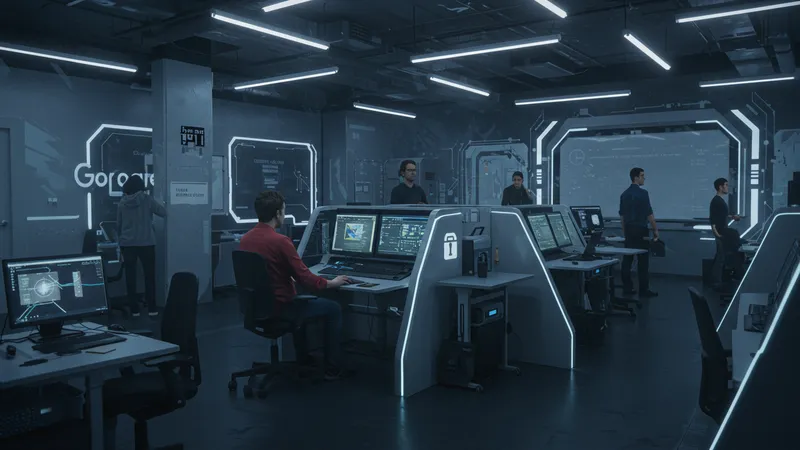
Their involvement ranges from funding state-of-the-art labs to shaping syllabuses with proprietary knowledge that gives their partner institutions a competitive edge. It’s a synergy that seemingly benefits all parties—students get hands-on experience with leading technologies while companies groom potential employees. Yet, critics argue this might skew education towards business interests instead of unfettered intellectual growth.
As companies continue to prioritize innovation and security, they often collaborate with educational institutions to ensure their technology reaches those who will ultimately defend it. Industry titans provide everything from exclusive lectures to internships, blending learning with real-world application. So, the question isn’t just about what's being taught, but why and by whom.
This collaboration raises a perennial question in education: are these courses serving the students, or are students unknowingly being molded for corporate conformity? The line between gaining practical skills and being groomed for business interests is at the heart of a controversial conversation unfolding before our eyes. What you read next just might flip your perspective entirely…
Fast-evolving courses brim with promise, but the speed of change can sometimes outpace understanding. Changes designed to meet current cybersecurity threats often add layers of complexity, risking leaving slower adopters in the dust. Despite good intentions, not all institutions manage to sync course evolution with actual industry demands, resulting in a disconnect.

Confounding matters are the uncertainties and inconsistencies in adapting to new curriculum frameworks. Professors themselves might struggle to stay ahead as syllabi shift like quicksand. For them, teaching becomes as much about staying informed as it is about imparting knowledge. This dynamic influences faculty’s approach to pedagogical tactics, sparking debates over education's ultimate purpose.
These rapidly shifting educational landscapes underscore the necessity for adaptable, resilient learners. As they push through the chaotic boundaries of digital threats, students learn resilience firsthand. But is resilience alone enough? With industries changing so quickly, does education risk obsolescence if it doesn't continuously reimagine its core approach? One might argue that constant evolution holds the key.
The paradox is stark: innovate too slowly, and they risk falling behind; change too quickly, and comprehension falters. What you discover next will delve into a yet murkier side of education's relationship with its innovations—can cybersecurity learning maintain this momentum without compromise?
Cybersecurity courses increasingly walk a delicate path, balancing between divulging trade secrets and maintaining strict ethical standards. It’s not uncommon for curriculum content to blur ethically ambiguous lines, inviting discussion—where should the line be drawn? And who decides how far is too far when equipping tomorrow's cyber guards with all they need to know?
With courses pushing boundaries, some argue they unwittingly arm students with knowledge that could be utilized for malicious intents. After all, the same skills that defend systems can be used to attack them. Educational institutions are tasked with ensuring that they nurture ethical cyber warriors, but it's a nuanced dance with potential pitfalls.
The focus, therefore, becomes not just about teaching advanced technique but fostering an ethical mindset. Many programs have adapted, engaging students in ethical hacking exercises, ensuring they understand the repercussions of their skills. Such curriculums aim to sculpt empathetic, ethical leaders in cyberspace.
But if surprises lurk around every digital corner, how can we prepare students for the minuscule ethical dilemmas they might face? It's an ongoing quest, fraught with challenges and questions that keep evolving. Yet one thing remains clear: this story's far from over, and what lies ahead might redefine ethics in education itself…
The concept of digital war rooms in learning isn’t what most envision. These environments simulate cyber attack scenarios, creating real-time crises without real-world repercussions. It’s a novel approach that immerses students in genuine pressure, mirroring the stakes they might face post-graduation in industry roles.
By constructing elaborate scenarios, educators enable students to work with the latest tools, simulating the heat of battle. The educational value extends beyond skills acquisition; it's about fast, critical decision-making and team dynamics under duress. It’s no longer about hacking in theory; it’s about practicing defense under fire.
Such innovation comes with caveats. Schools face challenges in ensuring these war rooms remain safe, ethical spaces for learning, not reckless indulgence. Some question the psychological strains these simulated scenarios may impose on students, suggesting future defenders must be resilient, adaptable, yet ethically grounded individuals.
Delving deeper, one might wonder how such intensive programs will evolve even further. As responsibilities expand, are students being overly equipped, or worse—prepared for battles yet to come in increasingly unpredictable digital landscapes? Our exploration continues through the evolution of a seemingly perpetual fight…
Universities everywhere employ what’s increasingly referred to as "teaching affiliates," a blend of industry professionals and seasoned academics. These experts don't just lend their expertise; they offer unparalleled industry insights that textbooks often can’t provide—a hidden powerhouse teaching method that remains one of academia's best-kept secrets.
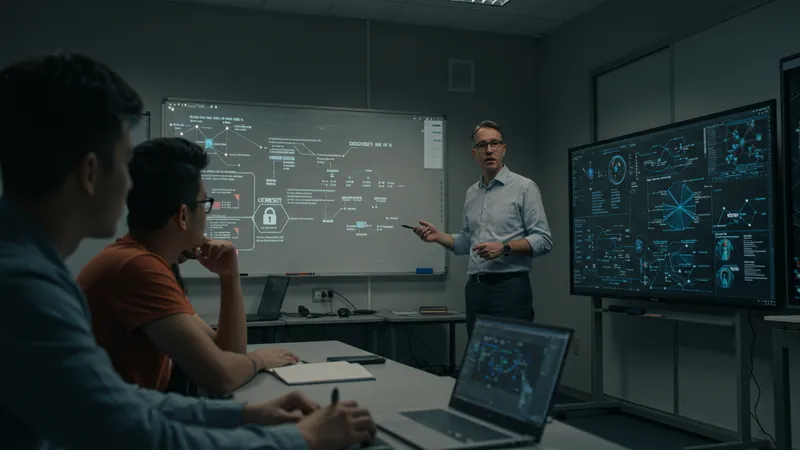
The influence of these affiliates cannot be overstated. They bring real-time experience and up-to-date knowledge, bridging the gap between classroom theory and the on-the-ground realities of warfare in cyberspace. Students aren’t just learning from academic perspectives—they’re absorbing invaluable insider knowledge that shapes their future roles.
But here’s the kicker: some speculate the rising contributions of teaching affiliates might overshadow traditional academic roles. This dynamic provokes a fascinating discussion on evolving education and its blurred boundaries between pure learning and industrial preparation.
The real question remains: can this symbiotic relationship keep advancing without losing the independent academic spirit? As the intricacies of cyber education unravel, it points toward an evolving future. The next surprise might just be the linchpin holding this partnership steady, redefining the educational landscape…
Step into a modern learning haven where theory and practice converge seamlessly—innovative cyber labs! These labs serve as interstellar playgrounds, loaded with the latest cybersecurity tools. Students manipulate and defend complex virtual landscapes, far surpassing static classroom boundaries.
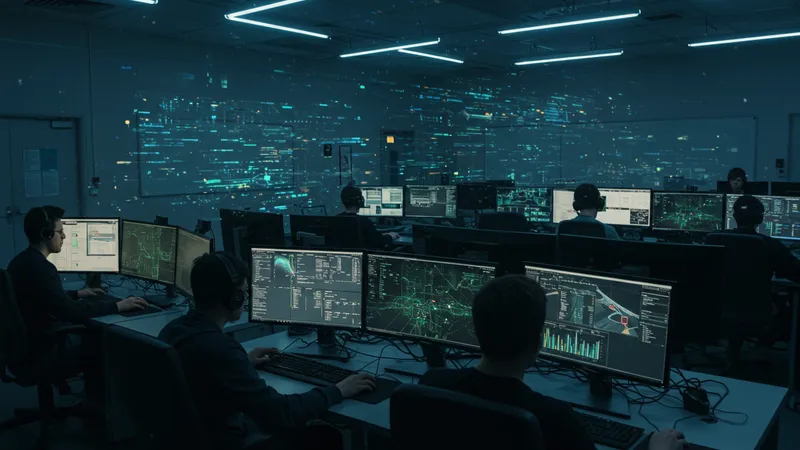
What’s distinctive here isn’t just the tech—it’s the philosophy. Institutions understand that only by equipping students with tangible experiences can they nurture truly effective defenders of the digital realm. In these labs, they don’t just learn about threats; they confront them.
Universities dedicated to these cutting-edge boutiques invest heavily in the latest technologies, providing students access to authentic, industrial-grade tools. By actively engaging with these resources, students gain hands-on exposure that books alone can never achieve.
But with progress comes potential pitfalls. Can these labs sustainably mirror the velocity at which cyber threats advance? And as the pace quickens, how will the balance between innovation and curriculum stability play out? The following chapters unfold a riveting, complex dance widely felt across campuses globally…
Despite its high-tech exterior, cybersecurity education increasingly recognizes the crucial component of digital empathy. More than just code and protocols, it’s about understanding human behavior behind technology. The emotional intelligence to preempt and mitigate threats might be one of education’s most overlooked tools.
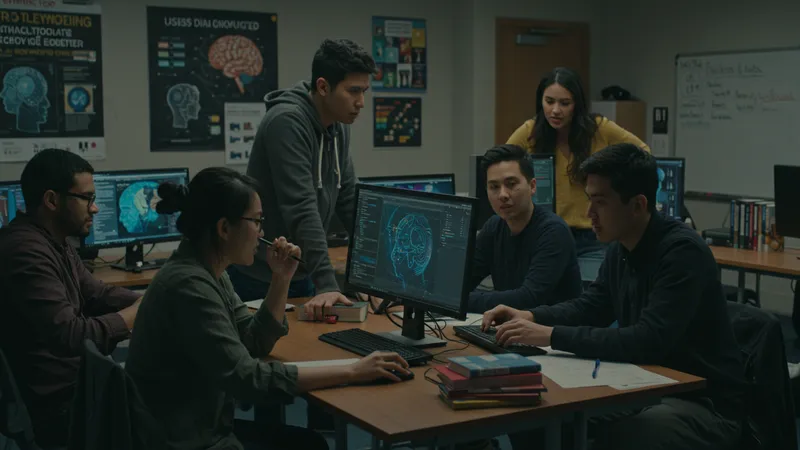
To this end, some courses weave psychology into their curriculums, fostering student awareness about how human connections intertwine with cybersecurity. It’s this marriage of tech and empathy that creates well-rounded guards—able to predict, adapt, and respond not just to data, but to those who wield it.
Infusing human-centered skills within a technical realm remains a revolutionary ambition. The ability to read the digital room, as it were, becomes invaluable amid cyber challenges players face. The focus on empathy helps to map user patterns, prevent breaches, and engage positively with ever-diversifying tech users.
Yet it sparks an evolving concern: how might this emphasis on emotional nuance impact the cut-and-dry world of codes? A deeper dive into shifting priorities will untangle this delicate dance between machine logic and human intuition. As we move forward, one thing’s certain: you won’t want to miss how this story morphs…
In the whirlpool of cybersecurity education, adaptability isn’t just a preference; it’s survival. The pressure for both institutions and students to keep pace with rapid developments is enormous. This constant evolution tests patience and resilience, unlocking a deeper exploration of how education copes with relentless advancement.
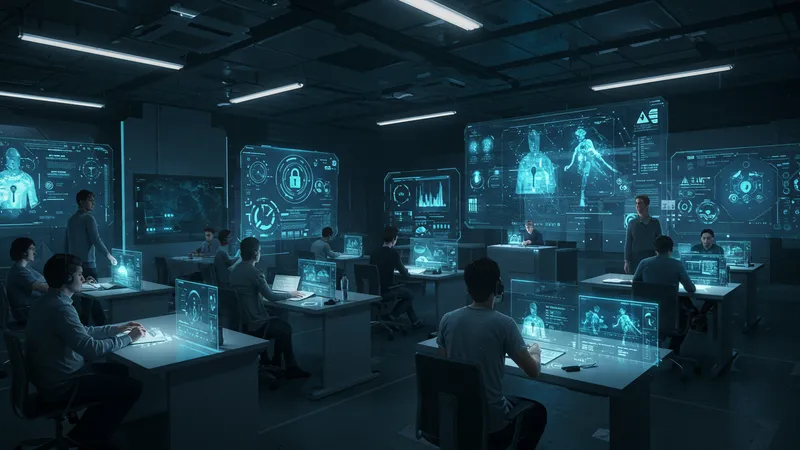
Cyber challenges change with dizzying frequency. Students today study problems resolved yesterday—an unsettling truth faced by educators. This whirlwind velocity demands courses capable of quickly reflecting and integrating new threats into lessons to maintain relevance.
Universities and instructors respond with gusto; they must stay ahead, devising fresh and pertinent curriculum components amid fluctuations. This ceaseless rhythm cultivates a progressive mentality in students—a preparedness to pivot at moment’s notice, essential for post-graduation success.
Addressing the challenges of this perpetual motion inspires fresh teaching strategies and innovations. Can this continual shift harmonize long enough to adequately prepare students before they launch into new careers? These answers linger ahead like an enigma yet to be unraveled. Prepare yourself; it’s an enlightening tale you can’t ignore…
With theory alone proving insufficient, the rise of real-world simulations in education presents a pivotal development. Shaping real experiences without real consequence, these simulations go beyond imagination to tangible application, solidifying cybersecurity education as a dynamic, living practice.
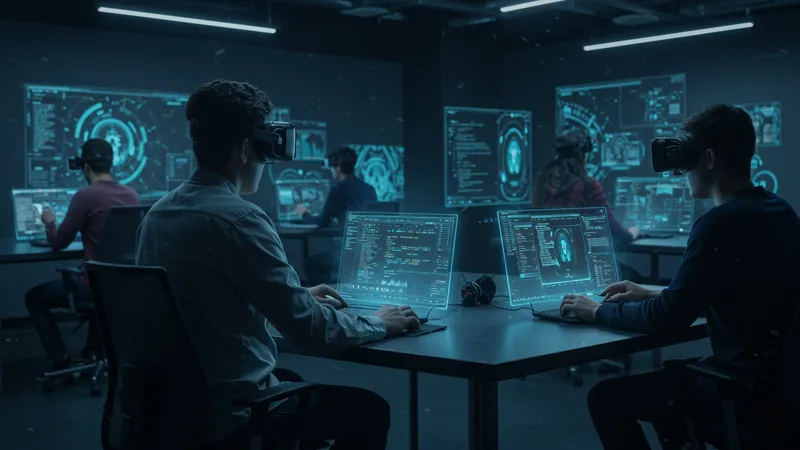
These practical exercises expose students to scenarios mimicking genuine industry challenges—like facing live zero-day exploits or managing breach response strategies. They deepen understanding while fostering critical thinking and adaptability under high-stakes conditions.
Incorporating these complex scenarios into learning sheds light on intricate dynamics within cybersecurity battles witnessed daily in industry roles. This hands-on aspect propels students toward competence and confidence, instilling a thorough understanding of operational intricacies.
However, a lingering question persists: can institutions sustain these simulations amidst funding complexities? Are students truly prepared if these simulations fail to keep fateful pace with burgeoning tech and threat landscapes? This narrative continues, promising revelations that redefine educational application expectations…
For cybersecurity education, compliance is both necessity and challenge. Courses must align with industry standards while striving to innovate. But how does one strike this balance, ensuring educational freedom without sidelining essential regulatory shadow?
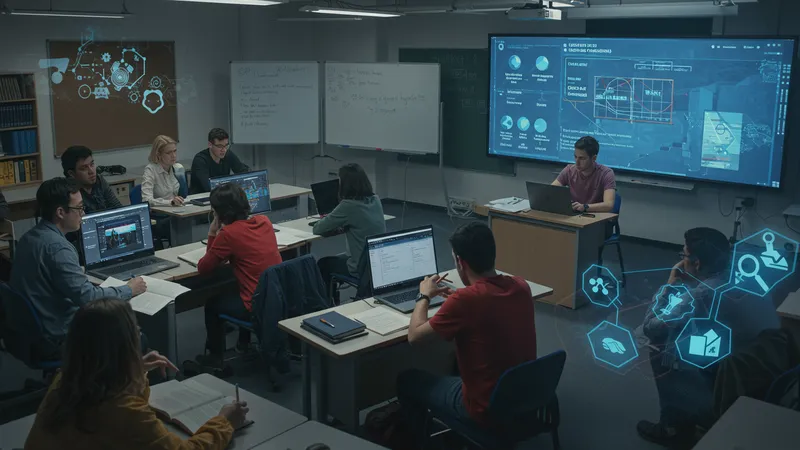
Compliance issues often intersect with curriculum design, affecting both the content and delivery of cybersecurity education. Institutions weigh the need for rigid adherence against experimentation in methodologies—a tightrope walk that influences overall pedagogical direction.
As regulations change, educational methods must pivot likewise. This reality shapes the teaching approach while prioritizing the integration of compliance concepts within everyday lessons, helping students adapt to frequently fluctuating environments.
Yet, behind compliance demands lies an implicit question: can cyber education maintain its innovative edge while constricting itself within rigid frameworks? The ramifications of these intersections shed light on industry expectations and academic approaches—stay tuned for insights that might redefine this balancing act…
Networking—an indispensable currency in academia, takes on unexpected dimensions within cyber education. It’s no longer just about classroom connections but forging lasting professional relationships that transcend academic borders, redefining how learning strides into career opportunities.
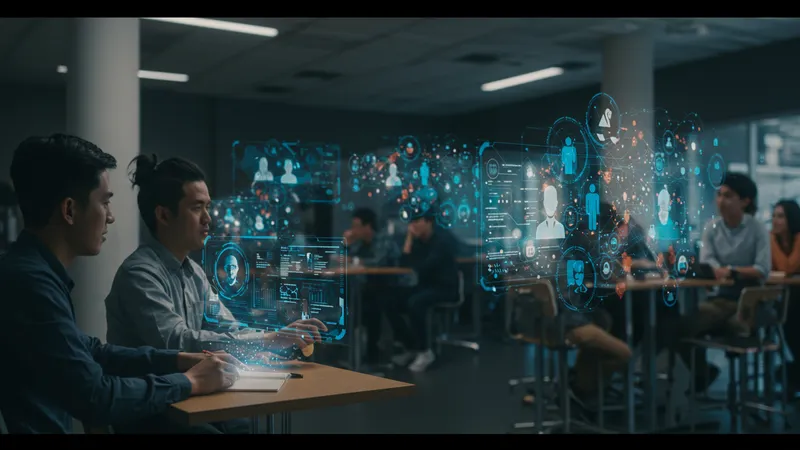
The opportunities found through these networks often shape career pathways in unforeseen directions. Mentorships emerge organically, furthering intel dissemination and resource sharing—a crucial step into professional landscapes barely understood until navigated firsthand.
Critics note potential drawbacks: could these essential connections compromise academic independence, nudging learners toward specific career paths before exploration? As students navigate these networks, they face pivotal decisions about personal versus professional alignment.
Ultimately, a pivotal question lies ahead: can cyber academia balance necessary self-reliance with network dependency? The blend of personal alliances swirling amid academic endeavors provides a robust storyline worthy of further exploration. Stay with us as this narrative peels away the layers, affirming or challenging enduring academic traditions.
Intertwining with global institutions encourages cross-border insights and collaborations that forever alter the face of cybersecurity education. However, how do these far-reaching affiliations impact both syllabus and student journey in this exceptionally connected age?
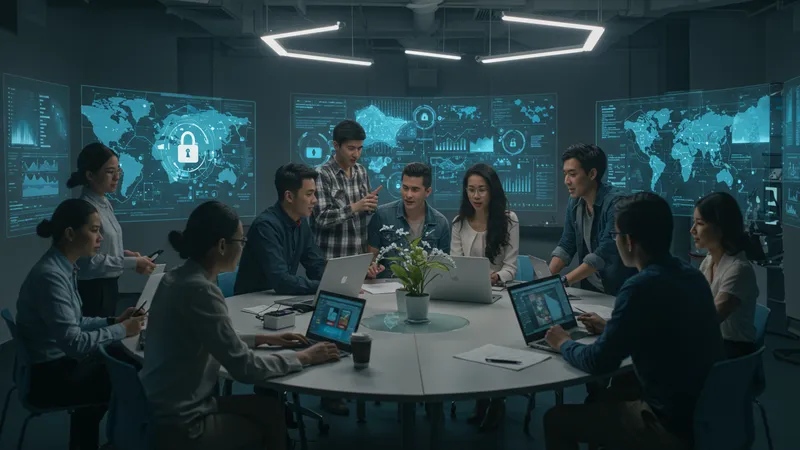
Such collaborations empower students with global perspectives beyond singular regional exposures. Groundbreaking partnerships introduce fresh viewpoints and practices—solidifying capabilities that rival world-class standards and introducing diversification previously sought yet untouched.
These collaborative journeys teach oneness, taking cybersecurity pedagogy to unprecedented heights. From simulated global exercises to shared intellectual resources, the educational envelope stretches wider, reinforcing interconnectedness and highlighting humanity within technical depth.
Beyond these alliances, the basic question persists: will globalization in academia withstand today’s volatile landscapes? Only time and discovery shall uncover whether these disciplined exchanges can thrive amid shifting educational paradigms. Await the narrative unraveling that might just cast aside conventional limits…
As boundaries blur and digital defenses morph, the future of cybersecurity education stands at a pivotal crossroad. Institutions, students, and professionals face unprecedented challenges—yet this digital momentum signals a renaissance for both learning and practice intertwined.
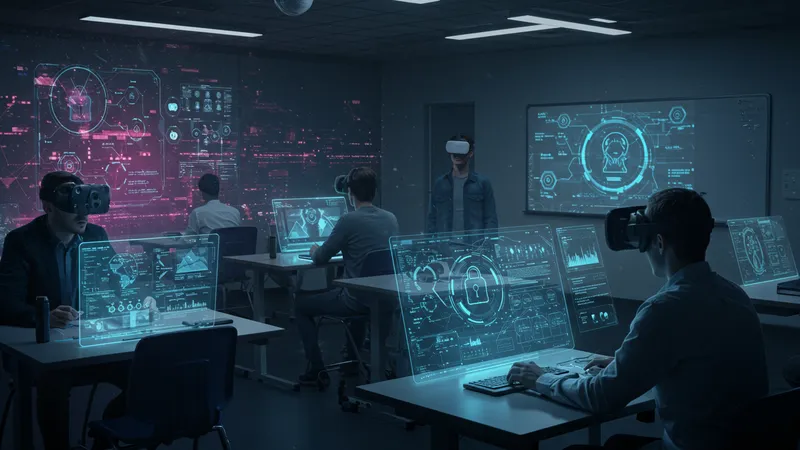
The blend of innovation, ethics, and real-world application presents an ongoing saga—one punctuated by strategic alliances between academia and industry giants. Each story thread within this tapestry hints at untold influence, suggesting we’ve barely scratched the surface of what’s possible.
Ultimately, this ever-evolving education remains a compelling journey powered by those determined to pioneer new frontiers. This story of ambition, choice, and alignment invites everyone who dares to join a previously inconceivable future adventure.
So, let’s journey together as we shape the growth and reach of technology—each step bold, curious, and informed by the wisdom of timeless knowledge and exploration shared across every digital boundary. The future awaits; share this narrative, bookmark its essence, and bolster the revolution!